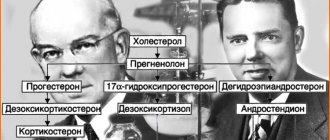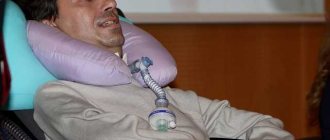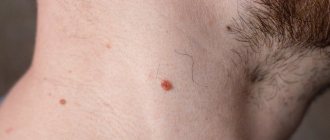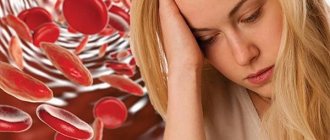A pediatric physiotherapist is a specialist with a diploma of higher medical education who not only prescribes, but also selects the most effective course of procedures for the careful treatment of various diseases. The popularity of physiotherapy does not lose every year: scientific and practical conferences are regularly held, specialists can expand their work skills by attending special courses. Many parents note not only an improvement in their general condition, but also an increase in the protective properties of the child’s body, which is especially important during periods of temperature change. A pediatric physiotherapist will help prepare young patients for procedures.
Using modern treatment methods in the physiotherapy department, it is possible to provide therapy to children of different ages, starting from 1 month.
Physiotherapy. What it is?
Physiotherapy is the influence on the body using various physical factors - both natural and artificially created. These factors include phenomena such as magnetic fields, currents, ultraviolet radiation, light, heat, air, ultrasound and many others. All these methods of influence are relatively harmless compared to, say, drug therapy and help the body activate its own healing mechanisms. Physiotherapy can be both the main method of treatment for some diseases, and an additional element of the main course of treatment. Physiotherapy for children is used more often than for adults, since the children's body is more sensitive and requires careful intervention.
How is the therapeutic effect of physiotherapy achieved?
The therapeutic effect of physiotherapy is determined by the activation of certain receptor fields in the body, which in turn stimulates the process of self-healing. The various physical factors mentioned above are capable of generating specific processes in tissues and organs. Depending on the area of damage and the purpose of physiotherapeutic procedures (treatment, prevention or rehabilitation), each patient is prescribed a strictly defined course, which prescribes not only the number of procedures, but also the area and intensity of the impact. This takes into account the individual characteristics of the human body, contraindications and other possible side effects. By the way, side effects from physiotherapy are extremely rare and can only be caused by the unprofessionalism of the physiotherapist and pediatrician.
What is important to know?
It is important to remember that the procedure using electrical impulses is not performed on people who have metal implants in the cardiac system or throughout the body. Also, the method is not suitable for those who have experienced a non-immobilized bone fracture. Before the procedure, the doctor must carefully examine the skin in the area where the pulses are given. If there is any damage, then they must be covered with oilcloth or the electrode supply must be shifted. Also, treatment of osteochondrosis using impulses is prohibited for people who have all kinds of purulent diseases of the subcutaneous fat and skin. The procedure can be carried out only after creating an outflow of pus. And don't forget about contraindications.
Treatment of this disease requires complex intervention, especially in advanced stages. An effective result cannot be achieved at one time, therefore, the doctor prescribes the optimal number of sessions using electrical impulses. As a rule, their number should be at least five times.
Who chooses and makes recommendations about the need to prescribe procedures?
- Pediatrician;
- A narrow specialist who diagnosed a certain deviation.
The physiotherapist directly selects the optimal course of treatment, makes appropriate prescriptions and carries out procedures.
Initially, the list of responsibilities of this specialist included exclusively the restoration of musculoskeletal function, but over time the list expanded. Today, a physiotherapist provides consultations, is responsible for carrying out procedures, and prescribes massage for a restorative effect. At the same time, the physiotherapist must be a good psychologist to help the child overcome the fear of doctors and everything new, and help him relax during the procedure.
Types of physiotherapy for spinal osteochondrosis: therapeutic effect, indications and contraindications
Osteochondrosis today is called a generational diagnosis - degenerative changes associated with accelerated wear and tear of the structures of the musculoskeletal system are difficult to treat. The pain is difficult to relieve, but physical therapy and physiotherapy for osteochondrosis actually provide any noticeable effect. You will learn from this article about what physical procedures can relieve negative symptoms, whether they can be combined and what to expect after a course of physical therapy.
Main areas of work
Modern and proven treatment methods in the physiotherapy department are based on various active factors. Typically used for physical therapy:
- electricity;
- magnetic fields;
- phototherapy;
- ultrasound;
- laser.
There is a list of installations that operate on the basis of alternating the principle of heat and cold. During a consultation during an appointment, the physiotherapist will clarify that this type of medicine does not completely replace the medical or surgical approach, but performs other important functions, including:
- assistance to the body after interventions;
- enhancing the effect of surgery and taking medications;
- fast recovery;
- strengthening immune properties.
Also, a full course of properly selected therapy reduces the drug burden on a person at different ages.
Electrophoresis
It is based on a successful combination of the effect on certain areas of the body of a direct electric current and a medicinal substance that flows in parallel with it into the tissues and cavities. In this case, the medicine exhibits greater activity, acts much longer, gradually being released from the formed depot. At the same time, the number of side effects is reduced, and most often they do not make themselves felt at all. When prescribing, the doctor hopes for the following effects:
- analgesic, relaxing;
- anti-inflammatory;
- sedative, vasodilator;
- secretory – ensuring better production and entry into the bloodstream of biologically active components.
You should know that the areas and areas of the skin on which special electrodes will be placed for procedures should not be dirty or damaged. Before applying special gauze pads, they are moistened in a medicinal solution prepared in advance for the procedure. And only then the electrodes are placed on top, fixing them with an elastic bandage if necessary. There will be no pain or burning sensation - just a pleasant and light tingling sensation. Usually the procedure lasts 10-30 minutes. A good and lasting effect is obtained from 10-15 sessions. Main indications for electrophoresis:
- radiculitis, neuritis, plexitis;
- inflammation or injury in joints, muscle tissue;
- , coronary heart disease, atherosclerotic vascular lesions;
- dental problems;
- gynecological pathologies;
- peptic ulcer, colitis, .
How are treatment methods selected in a physiotherapy department?
Initially, a consultation with a pediatrician is required, as well as examination, tests and tests to determine the nature and cause of the disease. Next, you should visit a specialist who will develop suitable treatment taking into account the degree of the disease, the age of the child, indications and contraindications, if any.
Based on the results of tests and conclusions, a physiotherapist will help create a competent line of procedures, determine how many sessions need to be performed, with what intensity. The specialist also determines, at the end of all procedures, whether a repeat course is needed, and if so, after what period of time.
Make an appointment with a physiotherapist
If you need the services of a specialist or want to ask questions, you can make an appointment on our website or by contacting the clinic directly. You can also order a call back, after which a manager will contact you. A consultation with a physiotherapist is carried out at a time convenient for you, you no longer need to sit in line and wait for an appointment. The price of diagnosis and treatment depends on the pathological condition and the physiotherapeutic methods used. Timely consultation with a doctor will allow you to avoid serious complications.
Reviews
Marina Petrovna
The doctor carefully examined my husband, prescribed an ECG and made a preliminary diagnosis. She gave recommendations on our situation and ordered additional examination. No comments so far. Financial agreements have been met.
Roakh Efim Borisovich
I am simply delighted with the doctor and the clinic. I haven't had fun in clinics for a long time. Everything went perfectly from a logistics point of view, strictly on time. I also received aesthetic pleasure both as a patient and as a person. I could communicate and this communication gave me great pleasure. My deepest bow to the ultrasound doctor.
Luzina Sofya Khamitovna
I really liked Dr. Vlasova. Pleasant and sweet woman, a good specialist. I received an answer to all my questions, the doctor gave me a lot of good advice. I was more than satisfied with the visit.
Evgeniya
We visited the “Mama Papa Ya” Clinic with our child. A consultation with a pediatric cardiologist was needed. I liked the clinic. Good service, doctors. There was no queue, everything was the same price.
Olga
I really liked the clinic. Helpful staff. I had an appointment with gynecologist E.A. Mikhailova. I was satisfied, there are more such doctors. Thank you!!!
Anonymous user
I removed a lump from Alina Sergeevna, the operation was great! Many thanks to her for her sensitive attention and approach to every detail.
Anonymous user
Today I was treated at the clinic, I was satisfied with the staff, as well as the gynecologist. Everyone treats patients with respect and attention. Many thanks to them and continued prosperity.
Iratyev V.V.
The Mama Papa Ya clinic in Lyubertsy is very good. The team is friendly and responsive. I recommend this clinic to all my friends. Thanks to all doctors and administrators. I wish the clinic prosperity and many adequate clients.
Belova E.M.
Today I had a mole removed on my face from dermatologist I.A. Kodareva. The doctor is very neat! Correct! Thanks a lot! Administrator Yulia Borshchevskaya is friendly and accurately fulfills her duties.
Anonymous user
I would like to express my gratitude to the staff of the clinic: Mom, Dad, and me. The clinic has a very friendly atmosphere, a very friendly and cheerful team and highly qualified specialists. Thank you very much! I wish your clinic prosperity.
Christina
I liked the first visit. They examined me carefully, prescribed additional examinations, and gave me good recommendations. I will continue treatment further; I liked the conditions at the clinic.
Anna
Good clinic, good doctor! Raisa Vasilievna can clearly and clearly explain what the problem is. If something is wrong, she speaks about everything directly, not in a veiled way, as other doctors sometimes do. I don’t regret that I ended up with her.
Wide range of devices
The First Children's Medical Center uses a wide range of devices for carrying out procedures that are distinguished by their reliability and good results when used. In the physiotherapy department, it is possible to carry out both electrophoresis - a popular procedure that combines the principles of pharmacology and physics: penetration of a key medical drug through the skin or mucous membrane under the influence of electric current, as well as ultrasound, laser therapy and others. There are inhalers, as well as magnetic devices that help in the fight against joint diseases. The physiotherapist will prepare the device for each procedure and will monitor the correct operation at all stages.
Physiotherapeutic procedures at the Center are safe and show their effectiveness after the first sessions, but to achieve maximum effect, complete completion of the course is required. Knowing how chemical, physical, and biological processes take place, a specialist understands why a certain device is needed and correctly calculates the time of its use. Additionally, a physiotherapist can give recommendations on how to choose auxiliary methods for restoring and treating the body, including at home.
Treatment methods in a physiotherapy room are selected taking into account age, capabilities, and complexity of the disease. At the Center, children can undergo complex procedures to cope with the following problems:
- respiratory system;
- musculoskeletal system;
- nervous system, etc.
Stable indicators in increasing the immune properties of the body were also noted. All procedures are carried out under the full supervision of a physiotherapist and, if necessary, a nurse. The equipment of modern world brands allows us to enhance the effect of each session, making it as effective and safe as possible. The comfortable atmosphere in the cabin sets you up for rest and relaxation.
The health of your child should be entrusted to professionals. If the first symptoms of illness occur, consult a doctor! The First Children's Medical Center employs experienced doctors who quickly recognize signs of the disease, conduct a full examination using modern medical equipment and provide qualified medical care. We work seven days a week and are waiting for you at any time from 8.00 to 20.00.
First children's medical center
Children's health means parents' peace of mind!
What are the contraindications for treating the spine with currents?
Despite the fact that physiotherapy is used in the treatment of many diseases, including osteochondrosis, it has its contraindications. The method of exposure to electrical impulses is prohibited:
- in the stage of exacerbation of the disease;
- under drug and alcohol intoxication;
- for some skin diseases;
- with inflammation of the kidneys in an active vase and tuberculosis;
- people prone to bleeding;
- in the presence of malignant tumors;
- for sensitivity disorders;
- for diseases of the circulatory system and heart;
- in case of individual intolerance to the method;
- during breastfeeding and pregnancy;
- for mental disorders, especially during exacerbation;
The attending physician must choose the features of the procedure, taking into account all possible consequences and problems of the patient.
Before starting a session, it is necessary to undergo examinations to identify contraindications in order to avoid negative consequences in the future.
Knowledge and skills
To use physiotherapy competently, a doctor must understand the nature of physical and chemical effects, clinical and biological disciplines, and master treatment methods. He must know the basic clinical symptoms and disease syndromes for which physiotherapy methods are used, the principles of compatibility and sequence of procedures, indications and contraindications for the use of physiotherapy, procedure techniques, and safety precautions when working with equipment.
About massagers for home use
This is a wonderful invention of mankind.
It’s great that problem areas can be worked out at home. True, many girls lack patience and after the second procedure they forget about the existence of such a massager. Their regular use is really effective, however, there are also contraindications. For example, a vacuum massage using a special jar is very good, but for varicose veins or pronounced vascular mesh it is not recommended - it will only aggravate the situation. My advice: choose an area that particularly excites you, work on it for 10 days (10-15 minutes every day) and only then move on to the next one. Pay attention to the force of pressure: after the procedure, the skin should turn red, but there should be no bruises or hemorrhages. Make movements along the massage lines. The effect after the complex will be noticeable after 2 weeks. Text: Natalia Kapitsa
Training to become a Physiotherapist (education)
Courses
MUIR Medical University of Innovation and Development (MUIR) conducts professional retraining and organizes advanced training courses (certification cycles) in the field of “Physiotherapy” for doctors. Specialists are offered full-time and distance learning. Based on the results of completing the courses, MUIR issues documents: certificate, diploma, certificate.
The Modern Scientific and Technological Academy (SNTA) is one of the leading educational institutions in Russia, accredited by the Ministry of Health in the register of organizations providing retraining and advanced training of medical specialists (including physiotherapists) using distance learning technologies. All training is conducted remotely, without interruption from work and place of residence. Upon completion, state-issued documents are issued.
The Academy of Medical Education conducts professional retraining courses in the specialty “Physiotherapy”. Courses are conducted in full-time and part-time format using distance learning technologies. This allows you to combine training and main work. The educational program is compiled on the basis of relevant educational and professional standards. MAEO (International Academy of Expertise and Evaluation) (remotely, without interruption from work) On this course you can obtain the profession of an ultrasound diagnostic doctor in 3 months and 15,000 rubles:
— One of the most affordable prices in Russia; — Diploma of professional retraining of the established form; — Training in a completely distance format; — The largest educational institution of additional professional education. education in Russia.
Universities
Peoples' Friendship University of Russia General Medicine (RUDN Medical Institute) Moscow State University named after M.V. Lomonosov General Medicine (Faculty of Fundamental Medicine, M.V. Lomonosov Moscow State University) First Moscow State Medical University. I.M. Sechenov General Medicine (I.M. Sechenov First Moscow State Medical University) National Research Nuclear University (MEPhI) General Medicine (Faculty of Medicine) Moscow State Medical and Dental University named after. A.I. Evdokimov General Medicine (Faculty of Medicine, Moscow State Medical University named after A.I. Evdokimov)
Pros and cons of being a physiotherapist
The effectiveness of physiotherapy lies in the fact that this treatment allows the patient to partially or completely abandon the drug load on the body. Even after the most successful operation, a person needs time to recover, because surgery is a radical method.
After surgery, the last thing you want is medication. To speed up the recovery process, doctors may prescribe physiotherapy.
A physiotherapist carries out various methods of medicine and treats the following diseases: ailments of the musculoskeletal system, nerves, blood vessels, ENT organs and respiratory organs. He can consult with other doctors and suggest new types of physical therapy. Together with his colleagues, the doctor draws up a comprehensive treatment.
If an arbitration lawyer works with papers, then a physiotherapist uses the widest range of physiotherapeutic equipment and tools. Each of them has its own purpose and capabilities.
It must be remembered that only the doctor should decide which treatment to use. If a neonatologist conducts treatment, he prescribes physiotherapy to enhance the therapeutic effect. A physiotherapist works in physiotherapy departments at clinics and hospitals. If he has a penchant for scientific work, he can make a career in an academic direction.
A physiotherapist, if he is a true professional, shows an interest in both medicine and technology. He strives to help people. Therefore, a medical worker must show responsibility, high intelligence and a desire to develop professionally. The specialist must have the ability to master new technologies in medicine.
Diseases for which you can consult a physiotherapist
Today, physiotherapeutic practice provides therapy and prevention of a large number of pathologies and diseases:
- sore throat, bronchitis, runny nose, colds, sinusitis;
- inflammatory processes in the joints;
- problems with potency;
- tonsillitis (chronic form);
- rheumatism of the feet or hands; acne on the skin, fungal infection;
- obesity, overweight;
- weakened immunity;
- haemorrhoids;
- headache;
- varicose veins;
- anemia;
- hepatic or renal colic;
- blood pressure problems;
- radiculitis.
The list of diseases that a physiotherapist can treat is quite extensive. In general, this specialist treats almost all organs and systems of the body. It is able to restore the functionality of the eyes, kidneys, joints, skin, heart, head, etc. In addition, an important task of a physiotherapist is to prevent diseases - to prevent their occurrence and progression.
Types of physiotherapy
Traditionally used:
- physical therapy (physical therapy);
- cryotherapy;
- massage;
- magnetic therapy;
- ultraviolet irradiation;
- UHF therapy;
- electrophoresis;
- mud therapy;
- medicinal baths;
- ozokerite therapy;
- laser therapy.
Each method has its own characteristics, contraindications and results.
Physiotherapy for arthrosis of the knee joint is practiced in combination. If there are contraindications, the doctor selects therapy individually.
Physiotherapy
Exercise therapy is approved for use only in cases of primary, non-advanced arthrosis, when the inflammatory process has not yet been able to seriously damage the tissue. Daily exercise helps strengthen the muscles in the knee joint area.
Exercise therapy should be performed three times a day. The duration of one lesson is at least 20 minutes. For older patients, there is a lighter set of workouts.
Physiotherapist appointment
Regular visits to a physiotherapist once every few months will not only help you get rid of existing diseases, but also prevent possible risks and ensure safety for your body. For patients with chronic diseases, it is recommended to undergo a doctor's examination at least once a month. At the appointment, the physiotherapist conducts a consultation, collects anamnesis, and identifies indications and contraindications for the procedures. In addition, the specialist fully examines the patient: measures blood pressure, pulse rate, listens to heart sounds, determines auscultation of the lungs, etc. (depending on the nature of the problem). At the first appointment, the doctor draws up an individual therapy and recovery program. The specialist must answer all the patient’s questions and explain the essence of the chosen treatment method.
And a little about secrets
Have you ever experienced constant back pain or unbearable joint pain? Judging by the fact that you are reading this article, you or your loved ones are already familiar with them personally. And of course you know firsthand what it is:
- constant aching and sharp pain;
- inability to move comfortably and easily;
- constant tension in the back muscles;
- unpleasant crunching and clicking in the joints;
- sharp shooting in the spine or causeless pain in the joints;
- inability to sit in one position for a long time.
Now answer the question: Are you satisfied with this? Can such pain be tolerated? How much money have you already spent on ineffective treatment? That's right - it's time to end this! Do you agree? That is why we decided to share exclusive material in which a famous expert, Doctor of Medical Sciences, talks about effective methods of treating arthritis, arthrosis, osteochondrosis and other equally serious diseases of bones and joints.
- Galvanization - direct currents of low voltage and low strength. Depending on the area of application (different parts of the body), the procedure time and dosage (tension) may vary. Activates blood flow in the extremities, restores damaged nerve fibers and soft tissues. It has an anti-inflammatory effect, relieves pain, relaxes, and relieves muscle spasms. Can be used to treat inflammatory processes of the gastrointestinal tract, hypertension, hypotension, vegetative-vascular pathologies, hearing and vision diseases. Widely used to treat diseases of the spine, spinal cord and joints.
- Electrophoresis is low-frequency electrical discharges that enhance the penetration of medications through the skin to the internal organs. The double therapeutic effect is achieved by activating blood circulation and deep absorption of drugs.
- Darsonvalization is the use of alternating pulse currents of high, ultrasonic and supersonic frequencies. It is used to relieve pain syndromes and relieve spasm of smooth muscles, increases the elasticity of the walls of blood vessels (varicose veins, trophic ulcers, long-lasting wounds), recommended for insomnia, treatment of migraines, skin rashes, frostbite, neuroses, hypertension. Widely used in cosmetology as a local procedure for tightening and rejuvenating the skin, relieving swelling and congestion.
- Electrosleep is the effect of electrical impulses on various areas of the brain. It has a calming, sedative, trophic, anticonvulsant effect. Can be used for insomnia, neurasthenia, mental attacks, ischemic attacks, asthmatic attacks.
- Diadynamic therapy is pulsed exposure to direct currents of a constant frequency (50 Hz and 100 Hz) alternating periods. Causes a sensation of tingling, slight burning, warmth or vibration. It is used to treat injuries and bruises of the limbs and spine, arthritis, treatment of osteoporosis, thrombophlebitis and other diseases.
- Diathermy is the use of high frequency, low voltage, high power currents. There is a feeling of strong heating of the skin, then deep heating of the internal tissues. Improves blood circulation, enhances metabolic processes, increases the body's immune resistance. Indicated for chronic inflammatory processes, pain syndromes (tonsillitis, rhinitis, etc.).
- Amplipulse therapy is the use of modulated sinusoidal currents for the treatment of asthma and bronchitis, inflammation of the gastrointestinal system, pelvic organs, ligaments and joints.
- Inductothermy is the use of a high-frequency magnetic field with induced eddy currents. A more uniform distribution of currents promotes uniform heating of internal organs, better tolerance by the patient and has a more lasting therapeutic effect.
Electrotherapy devices
Modern medical technicians and specialized companies offer a huge selection of devices of various sizes, characteristics and parameters for use both in medical institutions and at home. For electrophoresis and galvanization in physical rooms and at home, the following devices can be used: “Potok 1”, “ESMA 12.19 Lotus” or “ESMA 12.21U Galant”. "Aesculapius 2", "BTL 4000", "BTL 4000 Plus" allows you to generate pulses of various frequencies with a wide range. A much more expensive and functional device with a wide selection of programs, including electrosleep - “Radius - 01FT”.
A wide range of physiotherapy, magnetic and electrotherapy for the treatment of diseases of the nervous system, diseases of the spine, curvature of posture, joints, internal and ENT organs, is offered at Dr. Bobyr’s clinic in Moscow or Zelenograd.
Contraindications for electrotherapy
Despite the positive impact and effectiveness of electrical procedures for improving the health of the human body, their use must be monitored by experienced doctors and used with great caution. Electro- and magnetic therapy is strictly contraindicated for pregnant women and patients:
- with tumor formations of various etiologies;
- those who have had a stroke or heart attack or suffer from heart defects;
- with high temperature or fever;
- having purulent inflammation of internal organs and tissues;
- with acute bleeding and poor blood clotting;
- with tuberculosis or other viral and infectious diseases;
- with epilepsy or prone to convulsive conditions;
- with chronic liver and kidney diseases;
- those suffering from Parkinson's disease or multiple sclerosis;
- with individual intolerance to electric current or medications used for electrical procedures.
Types of physiotherapy
Today there are a large number of types of physical therapy treatments. Among them:
- hardware-manual massage (movable electrodes are used, which the doctor attaches to the fingers or palms; massage is performed on any part of the body, and to rejuvenate the skin on the face, the specialist uses microcurrent gloves); disincrustation (a procedure in which blood vessels dilate and the skin is cleansed; performed using special electrodes);
- acupuncture (a method for reducing the number of fat cells);
- isometry (a procedure that builds muscles);
- cavitation (several procedures as a result of which cavities are formed in the intercellular fluid, which leads to a reduction in fat mass);
- laser therapy and ultrasound;
- microcurrents (creating microstimulation at different levels using low-intensity current);
- electrophoresis (administration of drugs under the influence of current charges with insignificant force).
A wide range of procedures allows you to eliminate many problems in the body. But determining the treatment method is the task of the physiotherapist, who must carefully examine the patient and make the correct diagnosis.
Types of physiotherapy in the treatment of osteochondrosis
Modern medicine does not stand still. In recent years, many new and effective procedures have emerged aimed at restoring damaged vertebrae.
The selection of physical factors for osteochondrosis is carried out by the doctor. For each patient, our own treatment regimen is developed, based on age, general condition of the body, the presence of concomitant pathologies and contraindications.
Current treatment
In the fight against osteochondrosis, all kinds of electrical energies, pulsed and magnetic fields are widely used. Current therapy has a stimulating, stimulating and resolving effect, which allows the technique to be used for inflammation and joint pain.
Some types of electricity come into contact with the human body through electrodes and conductors. Others work at a distance and do not have any contact with the patient’s skin.
How to Become a Physical Therapist Steps
In most cases, becoming a physical therapist takes approximately seven years, starting from the time you enter university when you receive your license to practice.
However, as you will see in this article, not everyone follows the same path. For example, some people become physical therapist assistants before deciding to obtain the additional education needed to become a physical therapist.
Here are some of the steps on How to Become a Physical Therapist:
#1. Shadow work a few physiotherapists
This is an important step in knowing how to become a Physical Therapist (PT). First, always be polite and respectful when approaching physical therapists about job shadowing (observation) opportunities.
Additionally, demonstrate your enthusiasm for the field and your willingness to volunteer in exchange for the opportunity to learn more about what they do.
Remember that if everything goes well, they can serve as exceptional references that you will need later.
While on the job, you should keep a written log that includes the dates and times you offered your services and what you observed or assisted on those days. At the end of each experiment, get the control PT to sign and date your log.
Also, keep a written record that includes the dates and times you volunteered and what you observed or assisted on those days. Also, at the end of each experiment, ask for the PT supervisor's signature and date on your journal.
#2. Decide if you want to start your career as a Physical Technician
After some time in the hiring process, decide whether to become a PTA before pursuing physical therapy as a career.
Plus, if you think about it, PTAs typically do more physical and hands-on work and spend more time directly helping patients than PTs.
Ultimately, starting your career as an OTA can be rewarding if you do enough advance planning and choose the right schools and programs.
When it's time to pursue a career as a physical therapist, you can complete most of your additional classes online. Additionally, your time as a PTA gives you a better understanding of the field and helps you learn a lot.
#3. DPT Research Programs (and Their Requirements)
Even if you have not yet started attending college or university, it is important to find out what you will need for a Doctor of Physical Therapy (DPT) graduate program in physical therapy.
It will also help you develop a simplified plan. This will include all prerequisites for the course and will minimize any extra time that may occur in school.
Colleges and universities across the country offer DBT programs, so you can likely find options in your area.
However, be sure to look for physical therapy schools that are accredited by the Accreditation Commission on Physical Therapy Education (CAPTE). This is because you may have problems later when it comes time to get your PT license.
#4. Get a Bachelor's Degree
Still searching for How to become a Physical Therapist? “The Bachelor of Physical Therapist (therapy) degree in the DPT program is another important step to take.
Some DPT programs are open to first-year students. These include post-secondary and undergraduate education (usually lasting only six years).
However, most DPT programs are designed for people who have already completed their undergraduate studies at a university. So maybe this is where you should start.
Some of the most common college majors for students who have been accepted into DPT programs that require a bachelor's degree are:
- Exercise science
- Kinesiology
- Biology
- Health Science
- Psychology
- Pre-physical therapy
- Exercise Physiology
#5. Do more shadows (if necessary)
After completing your bachelor's degree in physical therapy (therapy), you can still do additional shadowing work if you feel it's necessary.
As part of their prerequisites, many DPT programs require candidates to have some demonstrated clinical experience under the supervision of one or more licensed physical therapists.
This experience may be paid or voluntary, but must include many hours of direct observation in a physical therapy environment. (In most cases the requirement is more than 100 hours of on-the-job supervision as verified by PT supervisors).
#6. Collection of letters of recommendation
To begin with, throughout your undergraduate studies and throughout the workforce, keep in mind that you will need to provide excellent references when applying to DPT programs.
Also, seek good relationships with your teachers, educational consultants, supervising physical therapists, club leaders and anyone else who can describe your best qualities.
Some physical therapy schools require up to four letters of recommendation. They want to know that important people think highly of you, especially in the areas of compassion, trust, leadership, commitment, critical thinking skills, social intelligence, maturity, attention to detail, and communication skills.
#7. Take the Graduate Record Examination (GRE)
If you do not choose the entry-level first-year DPT program, you may be required to take the Graduate Record Examination (also called the GRE General Test).
The GRE is a general standardized test used to measure a student's ability to succeed in a graduate-level program of study.
Many physical therapy schools have minimum GRE scores that applicants must meet before applying. Therefore, it is important to take GRE well before DPT deadlines. (Depending on your results, you may need to revise it).
Additionally, the GRE is offered as a paper-based or computer-based test. If you are using the computer version, you can jump to different questions and change your answers if necessary.
The test includes three main sections:
- Verbal reasoning
- Quantitative Reasoning
- Analytical letter
#8. Apply to Preferred DPT Programs
Additionally, in addition to your GRE scores and letters of recommendation, you should receive your official transcripts (from each school you attended) or have them sent directly to the PTCAS or physical therapy schools to which you are applying.
Most students use the Physical Therapist Centralized Application Service (PTCAS) system when they apply to DPT programs because it allows them to apply to multiple schools using one web application. Additionally, it allows them to monitor all aspects of their application in real time.
Each physical therapy school has its own admissions process, but it's usually best to register as soon as possible rather than wait for the deadline. Along with your personal recommendations and GRE scores, schools will also weigh your GPA.
In addition, most physical therapy schools also require written essays and/or conduct preliminary interviews.
#9. Earn Your DPT Degree
This is where you will really start to learn what it takes to become a physical therapist. Your DPT program will likely provide many interesting and exciting challenges along the way.
In addition to the courses (which may include laboratory research), you will have clinical practice.
However, staying organized and maintaining good study habits will be vital to your success.
Your courses will likely consist of subjects such as:
- Biomechanics
- Exercise Physiology
- Kinesiology
- Functional anatomy
- Functional biology
- Pathology
- Pharmacology
- Musculoskeletal system
- Endocrine system
- Cardiovascular and respiratory systems
- neurology
- Cellular histology
- Development of life expectancy
- Applied physiotherapy
- Clinical and evidence-based practice
- Psychology
- sociology
- Communication
- management
- Ethics
During your clinical internship (usually six months), you will be supervised by a licensed PT as you begin to apply what you have learned to real-world physical therapy.
#10. Pass the National Physical Therapy Exam (NPTE)
After earning your DPT degree, you must take the National Physical Therapy Examination (NPTE) to meet your state's requirements to become a licensed PT.
The exam typically includes 200 multiple-choice questions. They assess your basic knowledge of physical therapy and interventions regarding various human body systems, therapeutic devices and techniques, evidence-based practices, professional obligations and safety.
You are allowed to take NPTE up to three times in one year.
#eleven. Get licensed in your state
You must obtain a license from the appropriate licensing authority in your state. In addition to NPTE approval, there may also be additional requirements such as:
- At least 18, 19, or 21 years of age (depending on state)
- Having a social security number
- Passing a criminal background check, which may include fingerprinting
- Passing a jurisprudence exam that tests your knowledge of relevant state laws and regulations
Once you are licensed to practice, you can officially call yourself a physical therapist. Remember that you may need to renew your license from time to time, which may require a little continuing education before each renewal.
#12. Complete your residency (optional)
After completing your Doctor of Physical Therapy (Therapist) degree, you can apply to a residency program to gain additional training and experience in specialized areas.
These programs usually last one year. After this, you can specialize even further if you take a fellowship in an advanced clinical area.
However, fellowships typically involve longer and more intensive clinical supervision than residency training.
#13. Obtain board certification (optional)
After working in this field, physical therapists can apply to become a certified specialist in one of eight clinical areas offered by the American Board of Physical Therapy Specialties.
To become board certified, physical therapists must complete at least 2,000 hours of clinical work or an APTA-accredited residency program in their specialty and pass an exam.
To become board certified, physical therapists must complete a minimum of 2,000 clinical hours or an APTA-approved residency program in a specialized area and pass an exam.
In addition, there are nine (9) specialized areas in which you can obtain board certification:
- Orthopedics
- Geriatrics
- neurology
- Sports
- Pediatrics
- Women Health
- Cardiovascular/pulmonary
- Clinical electrophysiology
- Oncology
In conclusion, all you have to do is seize the moment!!! We showed you how to become a physical therapist.
And you find that getting there can be a little different for everyone. So why not plan how to get your physical therapist (therapy) degree(s).
If you're interested in becoming a PTA as part of your journey, be sure to check out some physical therapist assistant training options.
WE ALSO RECOMMEND:
- Important Tips for Getting Scholarship from 15 (UPDATED)
- AMBUCS Scholarships for Therapist Students 2020 - USA
- Best 15 Ph.D. Physiotherapy Scholarships 2020-2021
- 25 Affordable Ultrasound Colleges, 2020-2021
- Top Registered Nurses 11 Online Classes
- Scholarship for undergraduate, postgraduate and postgraduate students to study in Austria
What diseases does a physiotherapist treat?
A physiotherapist is a specialist who has a medical education and practices physiotherapy.
Today, physiotherapy is a field of medicine that studies how various natural and artificially created factors affect the human body. Most often, the use of physiotherapeutic methods is necessary to prevent the development of certain pathologies. In addition, physiotherapy is part of the medical rehabilitation of patients after severe injuries and serious illnesses.
A physiotherapist studies the therapeutic effects of heat, cold, light, water, ultrasound, laser, electric current, magnetic fields and other factors on the human body.
The best physiotherapists in Moscow work at the rehabilitation clinic of the Yusupov Hospital. Thanks to their vast experience in medical practice, the use of advanced rehabilitation techniques and the use of the latest equipment, patients at the Yusupov Hospital are able to achieve full recovery from serious illnesses and injuries in the shortest possible time.
A physiotherapist is engaged not only in seeing patients and determining treatment regimens, but also in coordinating the work of nursing staff in the physiotherapy department and monitoring the implementation of prescriptions.
The daily medical practice of a physiotherapist involves performing the following tasks:
- The physiotherapist identifies target organs - determines the sensitivity of the patient’s body tissues to certain physical factors. For example, nervous tissues perfectly perceive magnetic radiation, muscle tissues respond well to hydrotherapeutic factors;
- a physiotherapist develops optimal methods that are suitable for treating a particular disease;
- is looking for opportunities to have a comprehensive effect on the body, using both artificial and natural factors.
Physiotherapeutic methods of treatment have a number of advantages over other methods of treating diseases:
- any type of exposure does not damage the patient’s body tissues;
- physiotherapy enhances the effect of medications, up to their withdrawal;
- no side effects;
- the likelihood of developing drug dependence and withdrawal effects is excluded.
Thanks to the competent actions of highly qualified physiotherapists at the Yusupov Hospital, maximum results in the treatment of diseases are achieved and the likelihood of side effects is minimized.
The use of physical factors is indicated for the treatment of a wide range of diseases. Physiotherapy can be recommended for pathologies in any system of the human body.
Most often, the help and advice of a physiotherapist is required by patients with pathologies of the ENT organs, respiratory system, musculoskeletal system, gastrointestinal tract, arthritis and arthrosis, gynecological diseases, neurological diseases and dermatological problems. The safety of most physiotherapeutic methods allows their use in pediatric practice.
Complex therapy of various diseases using physical factors can achieve the following effects:
- reducing pain;
- activation of blood flow and lymph flow;
- stimulation of metabolic processes and activity of the body’s immune system;
- acceleration of regenerative processes in tissues;
- resorption of edema;
- increasing the body's compensatory capabilities;
- restoration of normal function of tissues and organs;
- increasing performance, eliminating depression;
- reducing the duration of the recovery period.
Physiotherapy has myostimulating and muscle relaxant effects. In addition, this treatment is used in preparation for surgical interventions.
Despite the fact that physiotherapy is gentle, in some cases the physiotherapist still does not recommend its use.
The use of physiotherapeutic methods is contraindicated for the following diseases and conditions:
- in the general serious condition of the patient;
- if the patient has a pacemaker installed;
- in acute febrile conditions;
- with cachexia (severe exhaustion of the body);
- after a heart attack (can be used no earlier than 3 months);
- for blood diseases and a tendency to develop bleeding;
- patients with mental illnesses who cannot control themselves during the procedure;
- in case of intolerance to the therapeutic factor;
- if there is damage to the skin at the site of intended exposure;
- in the presence of neoplasms (both benign and malignant);
- with respiratory, cardiovascular, renal failure.
Even if there are no contraindications, the number of physiotherapy sessions should not exceed two times a day.
A second course of physiotherapy can be carried out two to six months after a preliminary consultation with a physiotherapist.
Based on the results of diagnostic studies and indications for treatment of a particular disease, a physical therapist may prescribe the use of one or more of the following physical therapy methods.
Electrotherapy
The essence of this method is to use various types of electricity for medicinal purposes. The most commonly prescribed treatments are galvanotherapy, electrophoresis, amplipulse therapy, darsonvalization, electrosleep, and magnetic therapy.
Phototherapy
This method is based on the therapeutic effect on the body of various types of radiation: infrared, visible or ultraviolet - to activate blood supply and metabolic processes in the irradiated area.
Thermotherapy
For these procedures, substances with heat-retaining ability and high heat capacity are used: paraffin, therapeutic mud, ozokerite, sand, clay. Heat improves blood circulation and cardiac activity. There is a change in the speed of biochemical processes, an increase in cellular permeability, and restoration of impaired motor functions.
Hydrotherapy
Water is a biological irritant that has a complex effect on the human body.
Hydrotherapy, as a method of physiotherapy, involves the use of cold, cool and hot procedures.
Cold procedures have an analgesic effect, help harden the body, increase resistance to diseases, and tone the body.
Warm water has a relaxing and vasodilating effect, which any doctor and even a doctor of medical sciences can confirm. A physiotherapist may prescribe the use of baths, rubdowns, douches or underwater shower-massage.
Massage
- Massage has a positive effect on the entire body as a whole: it improves blood supply and lymphatic drainage, stimulates tissue nutrition.
- Depending on the patient's condition, he may be offered a relaxing or stimulating massage with different tempo, duration and strength.
- Most diseases require an integrated approach to treatment, so specialists at the Yusupov Hospital most often prescribe a combination of physiotherapeutic methods and drug therapy.
Physiotherapeutic procedures at the Rehabilitation Center of the Yusupov Hospital are carried out under the supervision of qualified physiotherapists who have extensive experience in practical work with patients in need of rehabilitation therapy. An individual treatment regimen is drawn up for each patient, taking into account the diagnosis, general condition and goals of therapy.
An appointment with a physiotherapist can be made by calling the Yusupov Hospital or on the clinic’s website using the feedback form.
- ICD-10 (International Classification of Diseases)
- Yusupov Hospital
- Badalyan L. O. Neuropathology. - M.: Education, 1982. - P.307-308.
- Bogolyubov, Medical rehabilitation (manual, in 3 volumes). // Moscow - Perm. — 1998.
- Popov S. N. Physical rehabilitation. 2005. - P.608.
*The information on the site is for informational purposes only. All materials and prices posted on the site are not a public offer, defined by the provisions of Art. 437 Civil Code of the Russian Federation. For accurate information, please contact the clinic staff or visit our clinic.
His field of activity is wide. Many human conditions can be improved through physical therapy. First of all, these are diseases of the kidneys and genitourinary tract, neurological pathologies, osteochondrosis, joint diseases, complications after colds. The postoperative condition can also be improved.
A physiotherapist is a specialist who has received special training aimed at the natural and artificial use of the physical factors of the human body. Exploitation of natural phenomena contributes to treatment, prevention and
The job description of a physiotherapist is aimed at accurately performing all types of procedures to improve human health.
Children very often suffer from colds. In their complex treatment, electrophoresis and ultraviolet radiation are used. All these methods are aimed at destroying the infection and stopping the inflammatory process. Only a physiotherapist can prescribe procedures.
Electrosleep is often prescribed for hyperactive children. It helps normalize natural night sleep and relieve nervous tension. In the physical room, herbal oxygen cocktails are prepared for children. This is a good remedy that strengthens the immune system.
The services of a physiotherapist are in demand in the treatment of neurological, urological, gynecological, ophthalmological and other pathologies. Most often, a physiotherapist is consulted when:
- runny nose, acute and chronic sinusitis;
- adnexitis;
- sore throats, colds, bronchitis, chronic tonsillitis;
- insomnia, anemia;
- varicose veins;
- fungal skin infection;
- inflammatory diseases of the joints;
- radiculitis, rheumatism of small joints of the feet and hands;
- weak immunity and other diseases.
Physiotherapeutic procedures have a diverse effect on the body, causing changes in the functional systems of the body at the cellular and molecular level. As a result, the body’s own protective and restorative reactions are significantly enhanced, which provides a pronounced and sustainable therapeutic effect.












